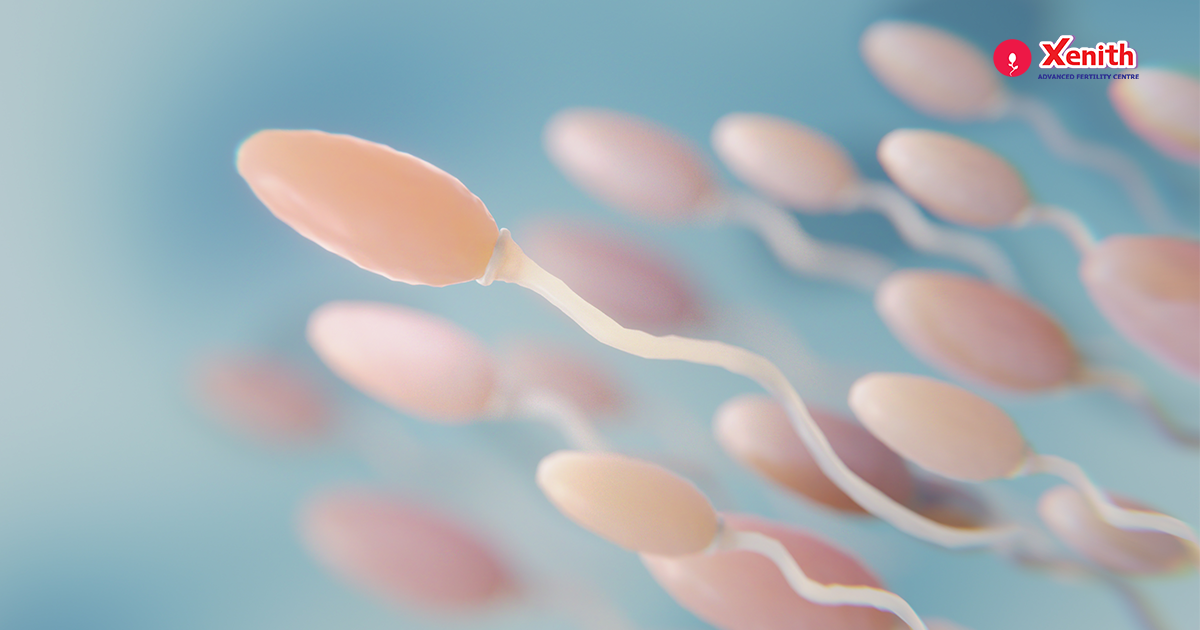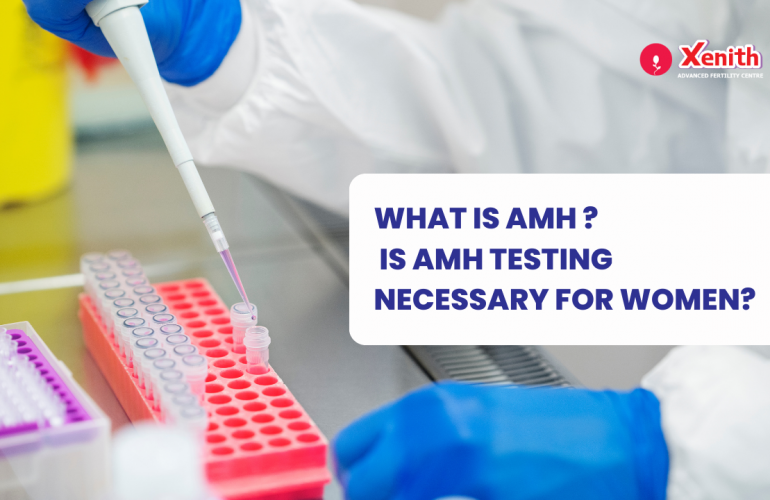Did you know that the average man produces about 1,000 sperm per second? Unlike women, who have a fixed number of eggs from birth, men produce sperm constantly. The sperm production process takes around 2 to 3 months.
Semen is the fluid released during ejaculation and it contains sperm along with other substances like fructose and protein. A semen analysis test is done mainly to assess male fertility. If you are unable to conceive after trying for 1 year of having unprotected sex if you are less than 35 years old or for 6 months if you are older than 35, then you might be dealing with infertility. The semen analysis test might therefore be recommended by your doctor in order to check the sperm health and also look for any abnormalities and infections that could be the reason for infertility. If the results indicate poor fertility, it doesn’t necessarily mean that conception isn’t possible and there are steps that could be taken to improve semen health and aid in conception. Usually this test should be done more than once to get accurate results because the sperm count can vary from time to time due to heat, stress, hormonal fluctuations, illness, or other factors.
Things to remember if you are getting your semen analyzed:
Avoid harmful substances like alcohol, drugs and caffeine for a week before the test.
Avoid ejaculation for a minimum of 3 days and a maximum of 7 days before the test.
Avoid certain medications like hormonal medications before the test. Speak to your doctor if you are unsure about its effect on sperm.
It is preferable to collect the sample at the laboratory that is doing the testing because the semen sample has to be tested within 60 minutes in order to calculate the liquefaction time and the sample should be stored between 20 and 37oC to keep it viable.
How to interpret semen analysis report:
- Ejaculate volume: the average ejaculation volume is between 2 to 5 ml with the lower limit at 1.5ml set by the World Health Organization (WHO). Low volume could be due to hormone imbalances, aging, nutritional deficiencies, illness, injury to the testicles or a blockage of the seminal vesicles
- Sperm concentration: of more than 15 million sperm per milliliter is considered normal. Less than 5 million sperm per ml is considered a low range. If no sperm is found, there could be an obstruction not allowing sperm to come through.
- Sperm motility- is the percentage of sperm that moves around. It should be over 42% in the collected semen sample. Less than that can cause issues with a successful conception. Normally at least 60% of sperm are moving properly. Sperm movement, or motility, is important to fertility because sperm must travel to fertilize an egg.
- Sperm morphology: a “normal” sperm should have a smooth, oval head, a midpiece and a tail. As per WHO guidelines more than or equal to 4% normal sperm morphology is considered normal. The ideal sperm shape is not made in high concentrations. An abnormal shape makes it more difficult to fertilize the egg.
- pH: The normal pH range for semen is between 7.2 to 7.8. A pH higher than 8.0 might indicate signs of infection and less than 7.0 might suggest blockage in the persons reproductive tract or that the sample became contaminated. Excessively high or low pH levels could lead to sperm cell death or affect their motility and function.
- Liquefaction: Semen is initially thick to help it adhere to the cervix and becomes more watery over time which then aids in sperm motility. The normal time for liquefaction should be within 20-30 minutes. Certain infections may increase the liquefaction times.
- Sperm count – is the total number of sperm in the ejaculate. A typical semen sample should contain between 20 to over 100 million sperm. The lower limit for WHO guidelines is 39 million sperm. Total motile count is also helpful to determine what kind of procedure to undergo for conception. The availability of very few motile sperm could warrant using Intracytoplasmic sperm injection (ICSI) along with In Vitro fertilization (IVF) where just one healthy sperm will be injected directly into the egg along with IVF procedure. The presence of more sperm might only need Intrauterine insemination (IUI) where a man’s sperm is concentrated, washed and transferred directly into the uterus when the woman is ovulating to aid in conception. Also, illness can impair semen count and function. It can take several months for semen quality to return to normal, especially after a high fever. In this case, semen specimens should be provided after a few months to ensure a more accurate result.
- General appearance- the normal semen color should be whitish or grey and opalescent. The color may change due to infection or presence of red blood cells. Semen that has a red-brown tint could indicate the presence of blood, while a yellow tint could indicate jaundice or be a side effect of medication.
- White blood cell count- white blood cells fight infection and inflammation in the body. Normally, there shouldn’t be too many white blood cells in the semen at all. The appearance of white blood cells indicates the presence of inflammation or infection in the testicle which could damage sperm. Some antibiotics might thus be needed to fight off the infection. In some men, antibodies are produced against their own sperm and affect its viability due to trauma, surgery or other unknown reasons.
- 10) Fructose level: fructose is an important sugar produced by seminal vesicles and its function is to provide energy to the sperms for swimming. WHO verifies the normal value for fructose level as 13 mmol per sample.
Infertility in men can cause anxiety and stress. Doing a semen analysis test could help identify the cause of infertility due to issues with the sperm or something else. This information could be helpful in going forward to address these issues and alleviate some of the stress and possibly aiding in conception. A poor result doesn’t always mean that you cannot have children and there could be ways to navigate around this. The experts at Xenith Advanced Fertility Centre would love to answer any questions you might have in this area.




